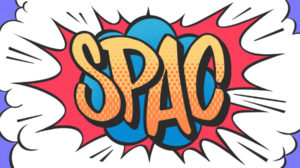Holy under the radar, Batman.
Today, Best Inc., a logistics company backed by Alibaba, listed on the New York Stock Exchange for $10 per share. After raising $450 million in its debut, Best is up 14 percent in morning trading.
Follow Crunchbase News on Twitter & Facebook
The company, whose Crunchbase profile indicates over three quarters of a billion in funding to date, is massive but unprofitable. It has been added to our public stock spreadsheet. Since we missed the run-up to this one, let’s peek at pricing quickly, and then dive into the numbers.
Downward Pricing
Notable to the Best IPO is its pricing march. The firm raised far less in its debut than it had previously intended.
The firm was forced to both cut its price range and the number of shares that it offered. Reuters does a strong job explaining what happened, detailing what the firm wanted:
The company had initially expected a price range of $13 to $15 per ADS and an IPO consisting of 53.56 million new shares and 8.54 million existing shares.
The firm eventually sold 45 million shares at its final $10 price. That means that the firm raised less than what its upper-range hoped for. Summing the company’s IPO shares and other allotments, we get a sum of just under 62 million shares. At the proposed $15 price, Best would have raised $928.5 million.
Why can Best Inc. command such sums, and why does it need so much capital? Good questions.
The Results
Best is big as heck. The company posted $1.3 billion in 2016 revenue, leading to a loss of just over $201 million. Given that the firm grew its revenue over 68 percent from 2015 to 2016, that pace of loss was likely just fine by its management team. The company’s losses did increase, however, from 2015 to 2016, which is worth keeping in mind.
2017 is an even more interesting year for Best, as it started to curve its losses down while still growing. The firm booked $1.195 billion in revenue during the first half of 2017 while posting a loss of $91.7 million. So the firm drove 91.9 percent of its 2016 revenue in the first half of 2017, while only generating 45 percent of the same net loss.
More revenue and slightly-shrinking losses belie improving margins, hinting at future profits.
Best makes its money from a few business groups, including supply chain management, “Express,” “Freight,” “Store,” and “Other.” This helps explain why Alibaba is a backer of the company: the ecommerce company needs to get its product from one place to the next.
Ew, Gross
So far we have avoided discussing Best’s gross profit. That’s because it doesn’t have any.
In fact, for all periods listed in its F-1, Best’s core business has cost more to run than it has brought in revenue. If you are wondering how the firm has managed such modest losses compared to its revenue given that it has less than zero gross profit to work from, we can merely applaud Best for being efficient.
However, the fact that Best generates no gross margin at all is likely why the firm raised so much less than it wanted. To its credit, the period of running gross margin-negative is likely nearly over for the company. Best lost just $662,000 in the first quarter on a gross basis off revenue of nearly $1.2 billion. In 2016, the company lost $78.5 million on a gross basis off only fractionally more revenue.
Again, improving margins. But with the company being grossly negative, it’s a stickier wicket than you usually bowl.
For more IPO coverage, Crunchbase News covered Despegar’s IPO debut this morning.

Stay up to date with recent funding rounds, acquisitions, and more with the Crunchbase Daily.




![Illustration of stopwatch - AI [Dom Guzman]](https://news.crunchbase.com/wp-content/uploads/Halftime-AI-1-300x168.jpg)
67.1K Followers